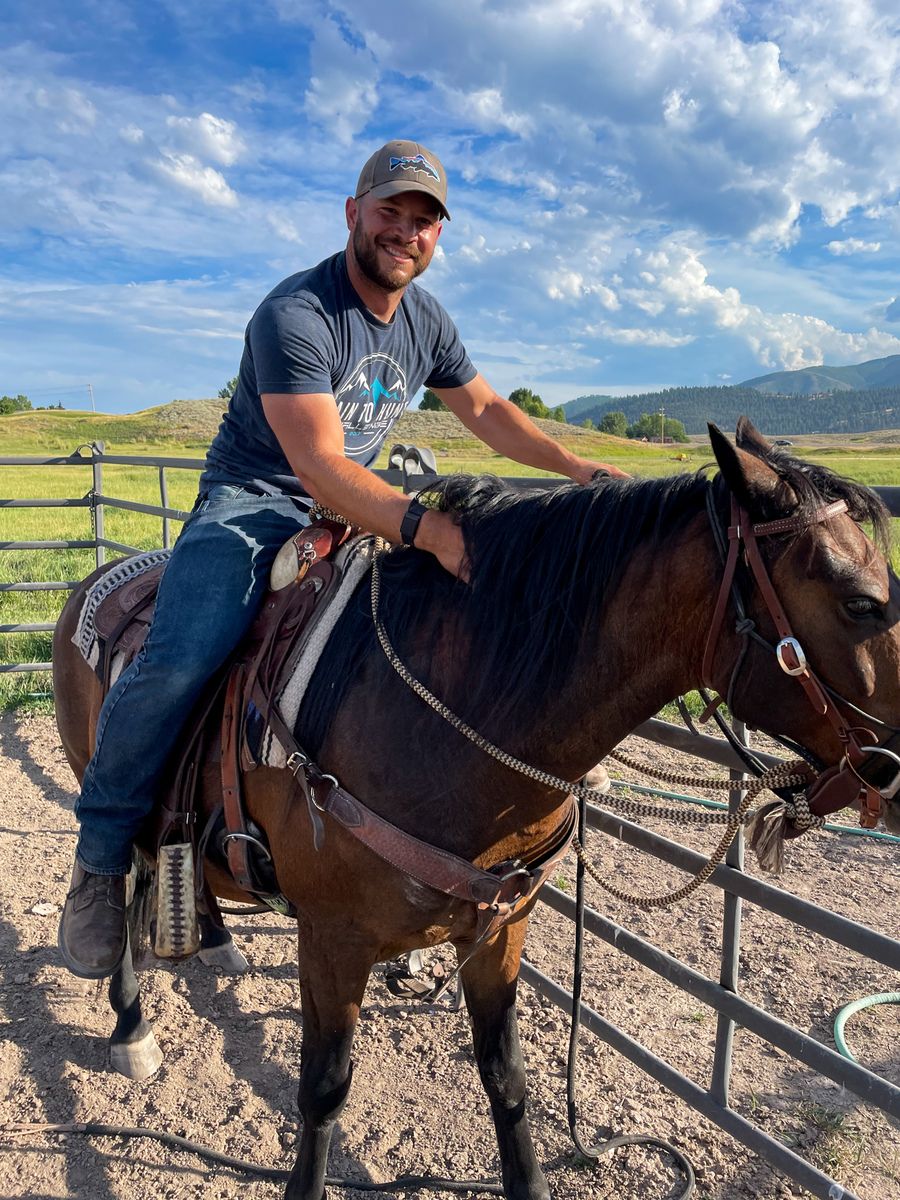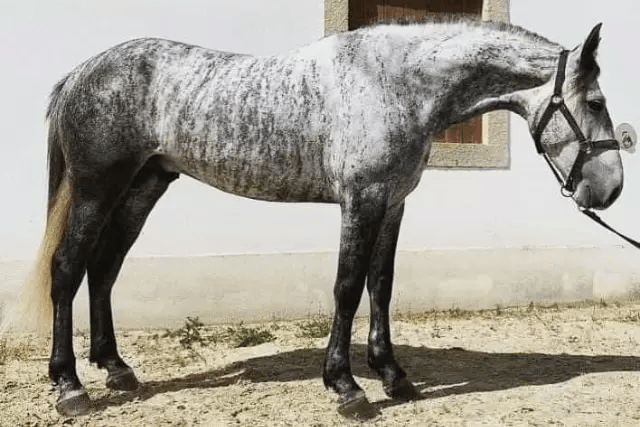
Horses can come in a wide array of colors and patterns. From the deep, dark hues of black and brown to the eye-catching brilliance of bays and chestnuts.
But did you know that even more unique and rare horse colors defy the ordinary?
When I started my horsemanship journey, I couldn't tell you what any color was. What is the difference between Bay and Dun horses?
Yeah... I had no idea.
This blog post will help you sound more well-versed around your more experienced friends. We'll dive into colors and coat patterns and uncover the genetics behind these stunning equine palettes.
Short Summary
Black, Bay, Chestnut, and Brown are the four common and basic coat colors.
Some unique and rare colors include white, chimera, leopard, and overo.
Horse markings, including facial, leg, and unique markings, play an essential role in identifying individual horses and may have significance in breeding or showing.
Understanding Horse Colors: The Basics
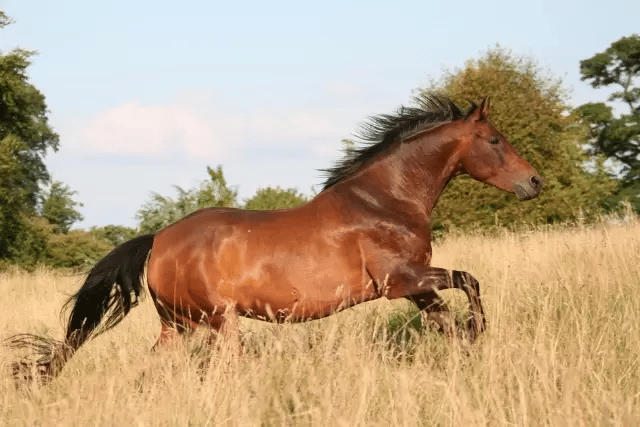
In the world of horses, there are four basic and most common horse coat patterns and four common horse coat colors.
Black
Bay
Chestnut
Brown
Each has its distinctive charm and allure. These primary colors are the foundation of most horse breeds, and their variations add to the rich tapestry of equine beauty.
Horse coat colors are influenced by genetics, involving the extension gene (E) and the agouti (A) gene, which determine the distribution of black and red pigments in the horse's coat.
Horses come in a variety of coat colors. Some of the most common ones are:
Sorrel
Bay
Palomino
Dun
Dapple gray
Buckskin
Roan
Black
Let's delve deeper into these primary colors and their unique characteristics.
Black Beauties
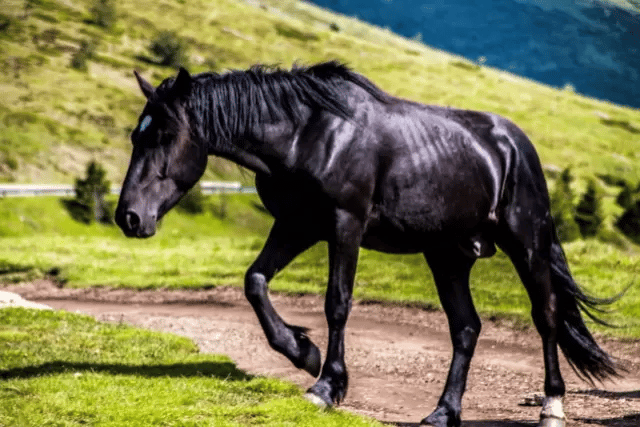
Black horses are a sight to behold, with their striking, solid black coloration from head to toe. They may have white markings on their faces or legs but are otherwise entirely black.
(They instantly make you think of the movie "Black Beauty.")
Their genetic makeup consists of at least one dominant extension gene (E) and either no agouti genes or only recessive ones. Friesians, Fell Ponies, and Shires are some breeds that typically have black horses.
However, it's essential to distinguish a true black horse from a dark bay or dark brown horse, as these colors can be easily misidentified.
Bay Brilliance
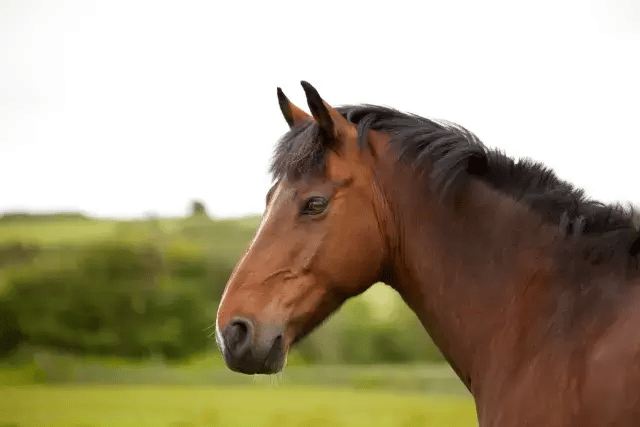
Bay horses are renowned for their reddish-brown coat with black points, making them the most common horse color.
Genetically, bay horses have black-based coats. These coats result from the black gene (E) and an agouti gene (A) acting together. These genes direct the distribution of black pigments to the horse's points. In contrast, blue roan horses have a different genetic makeup, resulting in their unique coloration.
Bay is a prevalent coat color among many breeds, including the majestic bay horse.
Thoroughbreds
Clydesdales
Standardbreds
Quarter horses
Dark Bay, a variation of the bay coat color, has a dark brown coat and black points.
Chestnut Charm
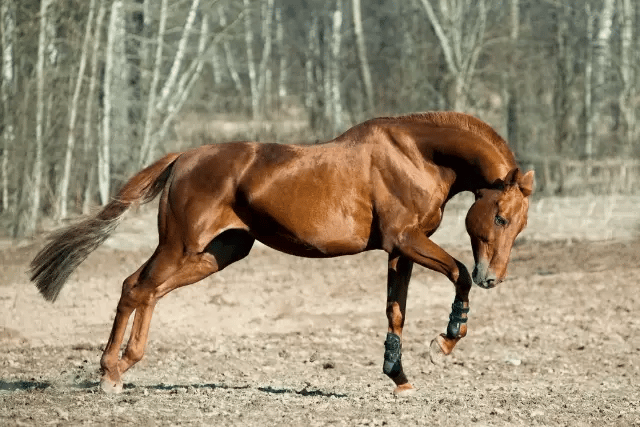
Chestnut horses captivate with their red coats, manes, and tails, which can come in shades such as light, full liver chestnut, and flaxen chestnut. Breeds like Haflingers and Belgians are known for their chestnut coats.
The chestnut color is determined by a gene that inhibits the production of black pigments, resulting in the red coat of a chestnut horse.
Bold Browns
Brown horses are often mistaken for bay or black horses due to their dark coat, which can vary with the season. Their coats may become even darker in winter, distinguishing them from their bay or black counterparts difficult.
Brown horses can be found in various breeds, particularly warmblood breeds, Ukrainian Riding Horse, Don, and Peruvian Paso.
Beautiful Buckskins
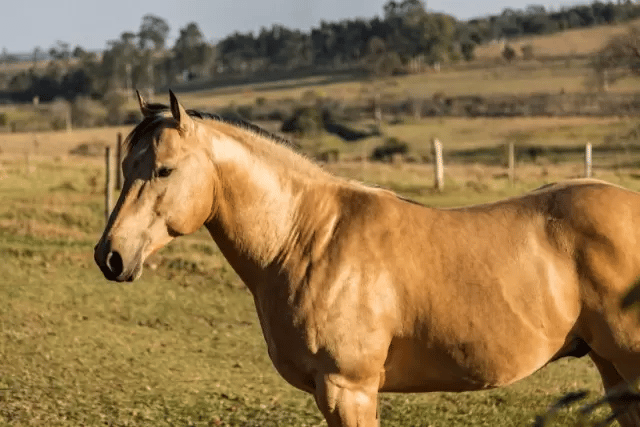
Buckskin horses are a sight with their rich, golden coats and iconic dark points. This unique coat color, reminiscent of warm, sunlit fields, is a product of the cream dilution gene interacting with a bay base color.
The result is a horse that stands out in any crowd, with its distinctive dark mane and tail strikingly contrasting its lighter body.
Unique & Rare Horse Colors
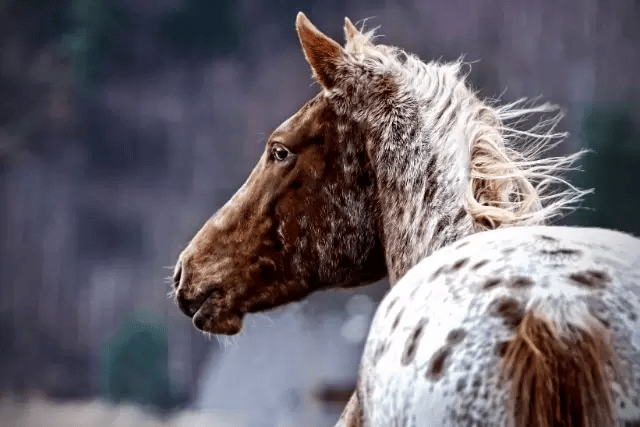
While the basic horse colors are undoubtedly captivating, a world of unique and rare colors defy the ordinary. From the ethereal beauty of white horses to the fascinating patterns of chimeras and leopards, these rare colors often result from specific genetic factors or crossbreeding effects.
Let's look at these extraordinary equine hues and their origins.
White Wonders
White horses are rare, with their snow-white hair, pink skin, and brown eyes.
True white horses are often mistaken for gray horses with white coats, resulting from specific genetic factors that create their unique and enchanting appearance.
Chocolate Flaxen Fascination
Chocolate flaxen horses are known for their dark chestnut base coat. Their manes and tails, on the other hand, are generally blonde or silvery in color.
This fascinating color combination results from the flaxen genetic modifier that lightens the horse's long hair.
The Morgan and Black Forest horse breeds commonly exhibit this captivating color, adding a touch of elegance and intrigue to the equine world.
Chimera Curiosities
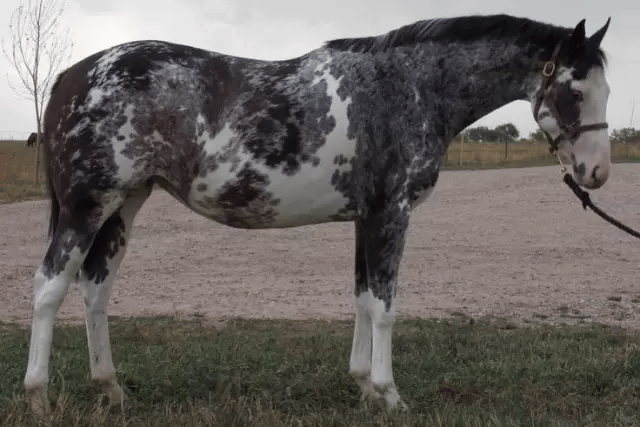
photo via stonehorses.com
Chimera horses are a marvel of nature, with a bi-colored coat resulting from a DNA error. These horses possess an extraordinary appearance, with black or chestnut base colors, white points in the face and lower legs, and a chocolate brown or black mane and tail.
Leopard Luxuries
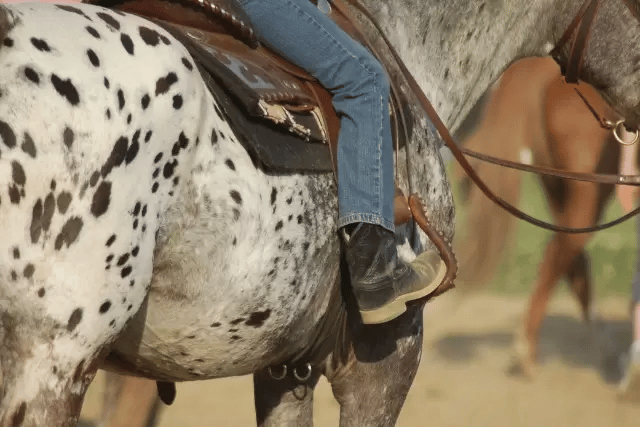
Leopard horses dazzle with distinct spotting patterns, resembling giant zebras or Dalmatians.
Their coats showcase black or white dapples and a gray or fine black and white mane and tail. The leopard complex gene is responsible for these striking patterns and features, such as white sclera, pink and black mottled skin, and striped hooves.
Brindle Beauties
Brindle horses are a rarity in the horse world. They have a black base coat and distinctive black-gray-white vertical striping, often referred to as a dorsal stripe.
This uncommon coloration results from an unusual gene inheritance.
This brindle pattern is often found in Arabians, Thoroughbreds, Mustangs, and Quarter Horses (among other breeds).
Horses with this brindle appearance stand out, adding a touch of unexpected beauty to the equine color palette.
Popular Horse Coat Patterns
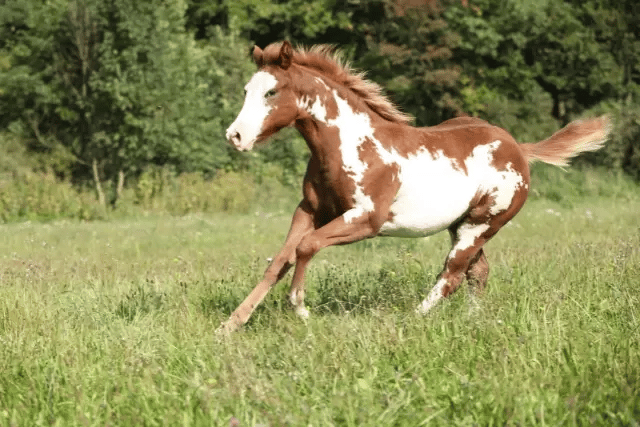
Beyond the dazzling array of colors, horses display various popular coat patterns that add more beauty and diversity to the equine world.
Some of these patterns include:
Appaloosa
Tobiano
Overo
Dappled
Flea-Bitten
These patterns can be found on horses of various breeds, creating stunning combinations and visual interest.
Appaloosa Artistry
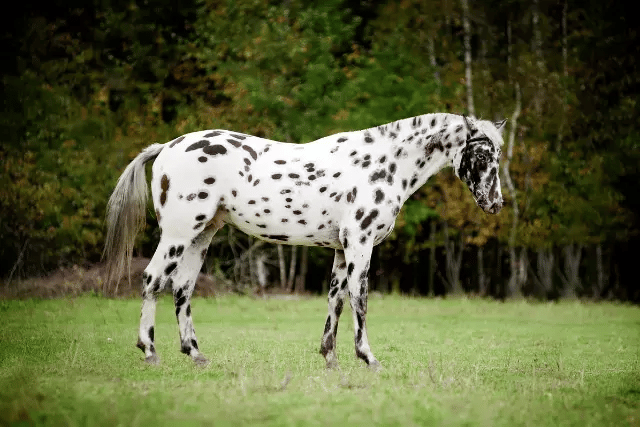
Appaloosa horses are known for their distinctive coat patterns, composed of a base color and an overlaid white spotting pattern. These patterns require the presence of two genes, the LP gene and a modifying gene. Appaloosa horses also often display striped hooves, mottled skin, and a white sclera visible in their eyes.
Tobiano Tones
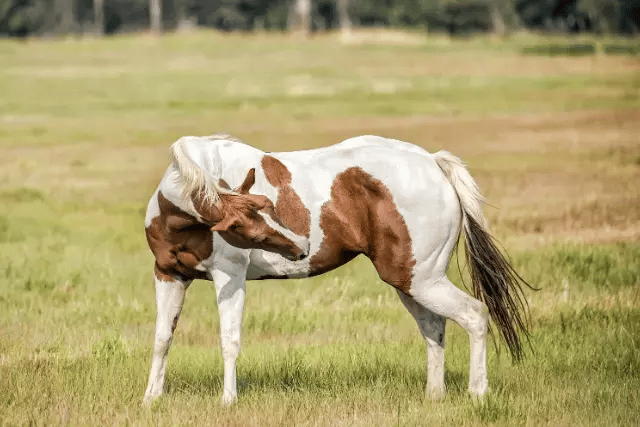
Tobiano horses exhibit a pinto coloration with the following characteristics:
Large white patches extending vertically across the back
Partially or fully white legs
Various shades, from primarily dark to mainly white
Solid-colored facial markings
Sometimes two-toned tails
Overo Originals
Overo horses showcase a unique, spotted pattern with the following characteristics:
Horizontal white markings
Irregular patches
Most commonly found in American Paint Horses
The white color that appears on the belly but rarely extends to the horse's back
One colored leg
A head that is either white or predominantly white with showy-type edges is called a calico.
Dappled Delights

Dappled horses are visually delightful, with circular or star-like markings on their coat. These markings can indicate a healthy coat or a genetic tendency, making dappled horses highly sought-after among horse enthusiasts.
Dappled horses are in various colors, with dapple gray horses being the most common.
Flea-Bitten Finds
Flea-bitten horses have a coat that changes entirely over time, often turning pure white for a short period before developing tiny speckles. These horses typically have black, bay, or chestnut coats at birth, with their coat gradually beginning to gray out and white hairs appearing around the eyes, flanks, and muzzle when the horse turns one year old.
Horse Markings & Their Significance

Horse markings, including facial, leg, and unique markings, play an essential role in identifying individual horses and may have significance in breeding or showing. These markings can help differentiate one horse from another and provide insight into the horse's genetic background.
Let's explore the various horse marking types.
Facial Markings
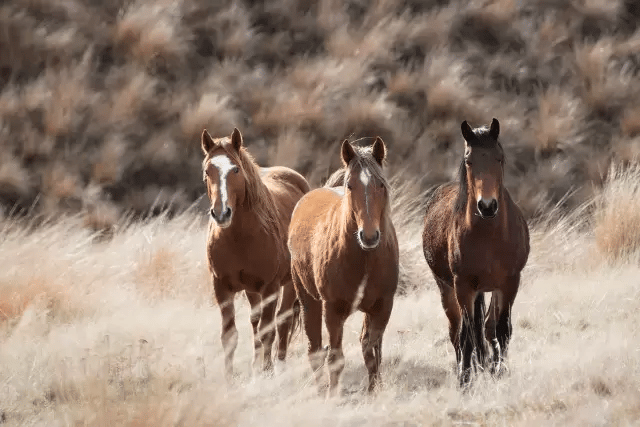
Facial markings on horses come in various forms, each with its unique look and placement on the horse's face. Some typical facial markings include:
Bald-face
Blaze
Stripe
Star
Snip
These distinctive markings can help identify individual horses and may be considered when breeding or showing horses.
For example, a bald-faced horse has a white marking that covers the entire face.
Leg Markings
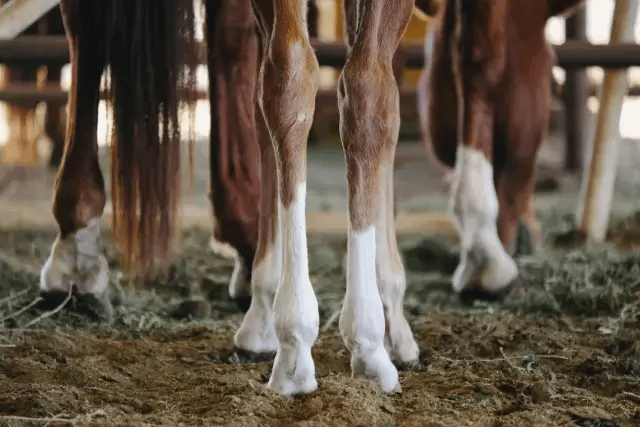
Leg markings, such as:
stocking
sock
pastern
coronet
The markings on the horse's leg vary in height and coverage. These markings can identify specific horse breeds or individual horses, providing insight into the horse's genetic background and potential breed-specific traits.
Understanding leg markings can be beneficial for breeders and those showing horses.
Unique Markings
Unique markings, such as Appaloosa patterns or Paint horse markings, can be horse breed-specific or result from genetic factors and crossbreeding. These markings add variety and individuality to the equine world, making each horse unique.
Understanding the genetics and significance of unique markings is essential for breeders and horse enthusiasts, as they can provide valuable insight into a horse's lineage and potential traits.
Importance of Horse Colors & Patterns in Breeding
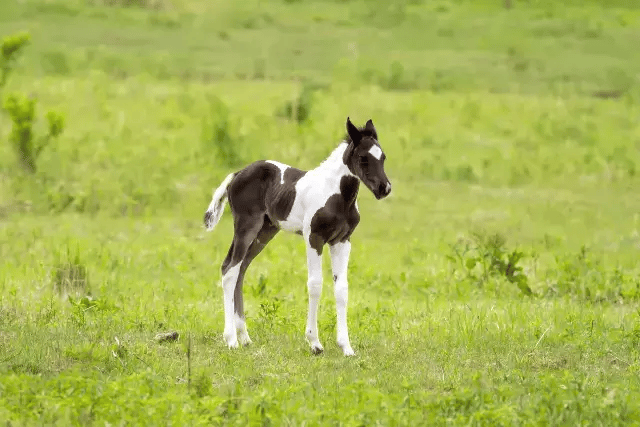
Understanding the importance of horse colors and patterns in breeding involves delving into genetics, crossbreeding effects, and breeding for specific colors and patterns.
By understanding the heritability of color and the underlying genetic factors, breeders can make informed decisions about which broodmares and stallions to breed together and what colors and patterns to expect in their offspring.
Genetic Factors
In breeding, relevant genetic factors include breed variation, heritability of traits, inheritance patterns, and genetic diversity. Breeders leverage genetic knowledge to select desired characteristics and create novel combinations of genes in the next generation.
Understanding the genetics behind a horse's body colors and patterns can help breeders make informed decisions and produce offspring with specific desired characteristics.
Crossbreeding Effects
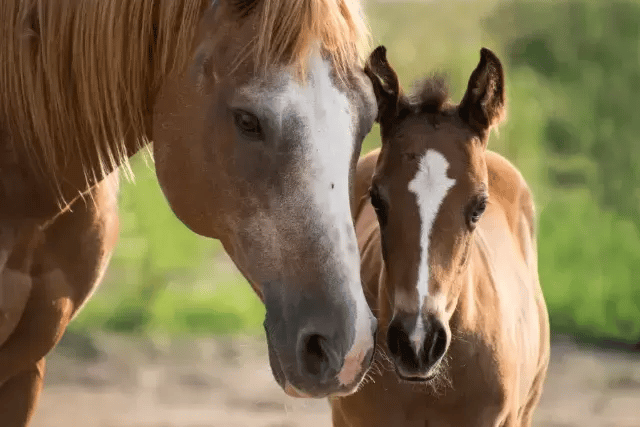
Crossbreeding can have both positive and negative effects on horse colors and patterns.
On the one hand, it can reduce inbreeding and its associated risk of recessive disorders, boost productivity and performance, introduce desirable genetic traits, and increase hybrid vigor.
Conversely, crossbreeding may eliminate specific genetic characteristics and potentially manifest recessive disorders.
By understanding the impacts of crossbreeding, breeders can weigh the potential benefits and drawbacks when making breeding decisions.
Breeding for Specific Colors & Patterns
Breeding for specific colors and patterns involves selecting horses with the desired color and pattern and breeding them together to generate progeny with the sought-after characteristics.
Understanding the genetics and inheritance patterns of horse colors and patterns is essential for breeders, as it enables them to anticipate the potential outcomes of their breeding decisions and produce offspring with the desired traits.
By understanding the genetics of horse colors and patterns, breeders can decide which horses to breed.
Summary
In conclusion, the world of horse colors and patterns is a vibrant and fascinating realm that showcases the beauty and diversity of the equine world.
From the four primary colors to the unique and rare hues, horse colors and patterns are a testament to the artistry of nature and the complexity of genetics.
Understanding the genetics behind these stunning equine palettes and the importance of horse colors and patterns in breeding allows us to appreciate these magnificent creatures even more and make informed decisions when breeding or showing horses.
Frequently Asked Questions
What are the five basic horse colors?
The five primary horse colors are gray, black, bay, chestnut, and dun. Variations of these can include a sorrel horse or pinto.
What colors are horses?
Horses have four or five primary coat colors: black, bay, chestnut, gray, and dun. Some breeds, such as Friesian horses, are almost exclusively of black coats, while other colors, such as bay, are common in many horse breeds.
What is the rarest color of horses?
Pure white is the rarest horse coat color, with other popular coat colors being Sorrel, Bay, Palomino, Dun, Dapple gray, Buckskin, Roan, Paint, Appaloosa, Gray, Chestnut, and Black.
Each of these colors is unique and caused by various combinations of genes.
What are the four primary horse colors?
The four primary horse colors are black, bay, chestnut, and brown.
What is the difference between a bay horse and a dark bay horse?
A bay horse has a reddish-brown coat with black points, while a dark bay horse has a dark brown coat with black points, making it appear darker.
